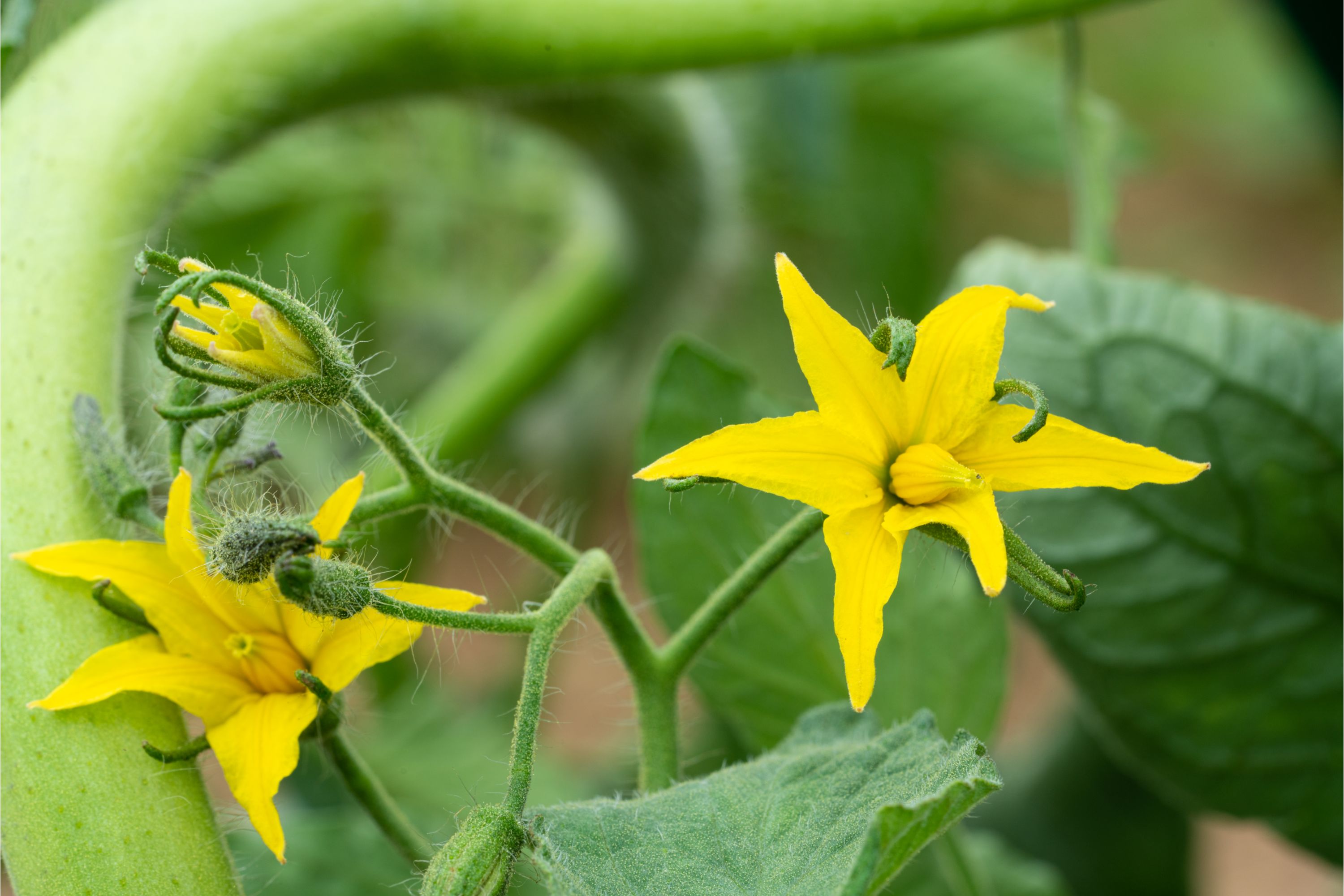Tomato
(Solanum lycopersicum)

Description
Solanum lycopersicum, commonly known as the tomato plant, is a member of the Solanaceae family, which also includes eggplants, potatoes, and peppers. It is one of the most popular and widely cultivated vegetable crops in the world, and it is grown for its edible fruit. Origins and History The tomato plant is believed to have originated in South America, specifically in the Andean region of present-day Peru, Ecuador, and Chile. The Incas were the first to cultivate the tomato plant, and they called it "tomatl," which means "plump fruit." When the Spanish arrived in the Americas in the 16th century, they brought the tomato back to Europe, where it was initially grown as an ornamental plant due to its bright and colorful fruit. It wasn't until the 18th century that the tomato began to be recognized as a food crop in Europe and eventually spread to other parts of the world. Physical Characteristics The tomato plant is a sprawling, herbaceous, and relatively short-lived perennial plant that is typically grown as an annual. It has a taproot system and can grow up to 10 feet tall under optimal growing conditions. The leaves of the tomato plant are typically 4-10 inches long, with a serrated edge and a slightly fuzzy texture. The plant produces small, yellow, five-petaled flowers that are typically less than an inch in diameter. Fruit Characteristics The fruit of the tomato plant is a berry that is typically red, but can also be yellow, green, or even purple, depending on the variety. The fruit ranges in size from small cherry tomatoes to large beefsteak tomatoes, with some varieties weighing up to a pound or more. The fruit is rich in vitamins A and C, as well as potassium and lycopene, a powerful antioxidant that has been linked to numerous health benefits. Growing Conditions The tomato plant is a warm-season crop that requires full sun and well-drained soil with a pH between 6.0 and 7.0. The ideal temperature range for growing tomatoes is between 70 and 85 degrees Fahrenheit, and the plant requires consistent watering throughout the growing season. The tomato plant is susceptible to numerous pests and diseases, including aphids, whiteflies, spider mites, and various fungal diseases. Varieties There are countless varieties of tomato plants, ranging from tiny cherry tomatoes to large beefsteak tomatoes, and from traditional red to yellow, green, and even purple. Some popular varieties include: Beefsteak: Large, meaty tomatoes that are great for slicing and sandwiches Cherry: Small, bite-sized tomatoes that are great for snacking and salads Roma: Egg-shaped tomatoes that are great for making sauces and pastes Heirloom: Old-fashioned varieties that have been preserved and passed down through generations Grape: Small, oblong tomatoes that are great for snacking and roasting Uses Tomatoes are incredibly versatile and can be used in a variety of dishes, including salads, sandwiches, sauces, soups, and stews. They are also great for canning and preserving, as well as for drying and roasting. In addition to their culinary uses, tomatoes have numerous health benefits, including reducing the risk of heart disease and cancer. Conclusion Solanum lycopersicum, or the tomato plant, is a versatile and widely cultivated vegetable crop that has a rich history and numerous health benefits. With countless varieties to choose from and endless culinary uses, the tomato is sure to remain a staple in kitchens around the world for years to come.
Taxonomic tree:







